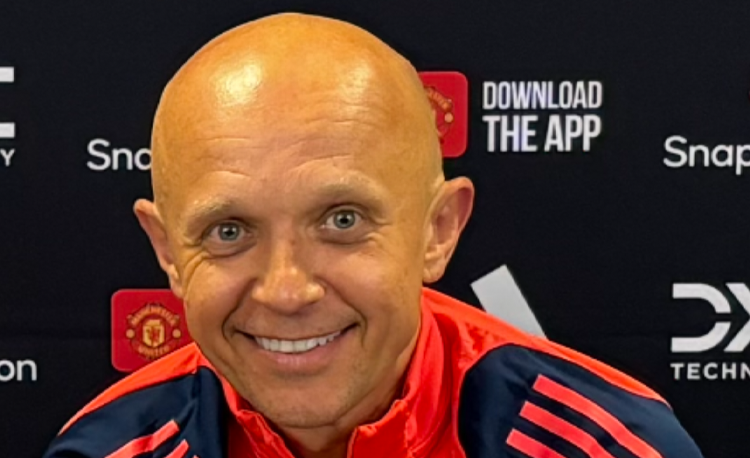You are viewing 1 of your 1 free articles
Create and score
The emphasis for this session is on exploring different movements and rotations to create overloads and finishing opportunities. It’s a very dynamic, high tempo session, with a lot of repetitions for players to achieve success.
| Area | Dependent on age group and numbers |
| Equipment |
Mini goals, full size goals |
| No. of Players |
Minimum of 7 + 2 goalkeepers |
| Session Time |
At coach’s discretion |
The emphasis for this session is on exploring different movements and rotations to create overloads and finishing opportunities. It’s a very dynamic, high tempo session, with a lot of repetitions for players to achieve success.
Players also have opportunities to express themselves and be creative in attacking play. The session gradually progresses from an unopposed technical part to a game situation, making it more complex and challenging. It progresses from unopposed practice to 3v2/4v3 to a 7v7 zonal game, helping to build confidence as well as understanding of attacking patterns, improving players’ individual and collective play.
These types of sessions are part of our academy coaching program, which runs on six-week cycles. This particular cycle is called Create and Score. This session or parts of it can be run once a week, when coaches want to work on attacking principles of play.
TECHNICAL
Players work in pairs and support the red player inside the pitch. Player 1 passes to target player, who lays ball off to Player 2, who passes ball into the mini goal [1a].
[1a]
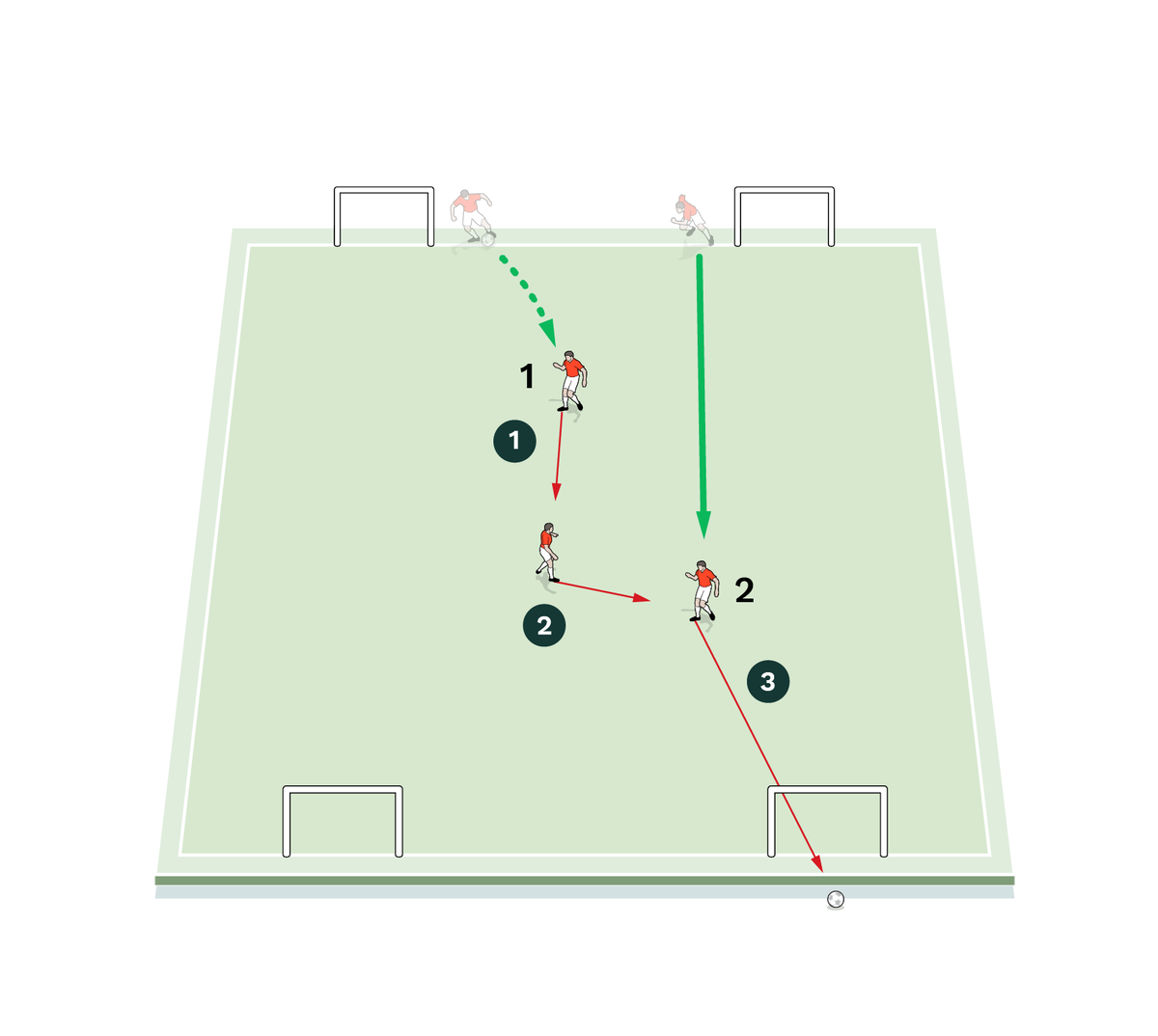
-
Player 1 passes to target player
-
Target player lays ball off to player 2
-
Player 2 passes ball into mini goal
Both players sprint behind the goal and the same pattern starts immediately from the opposite side [1b].
[1b]
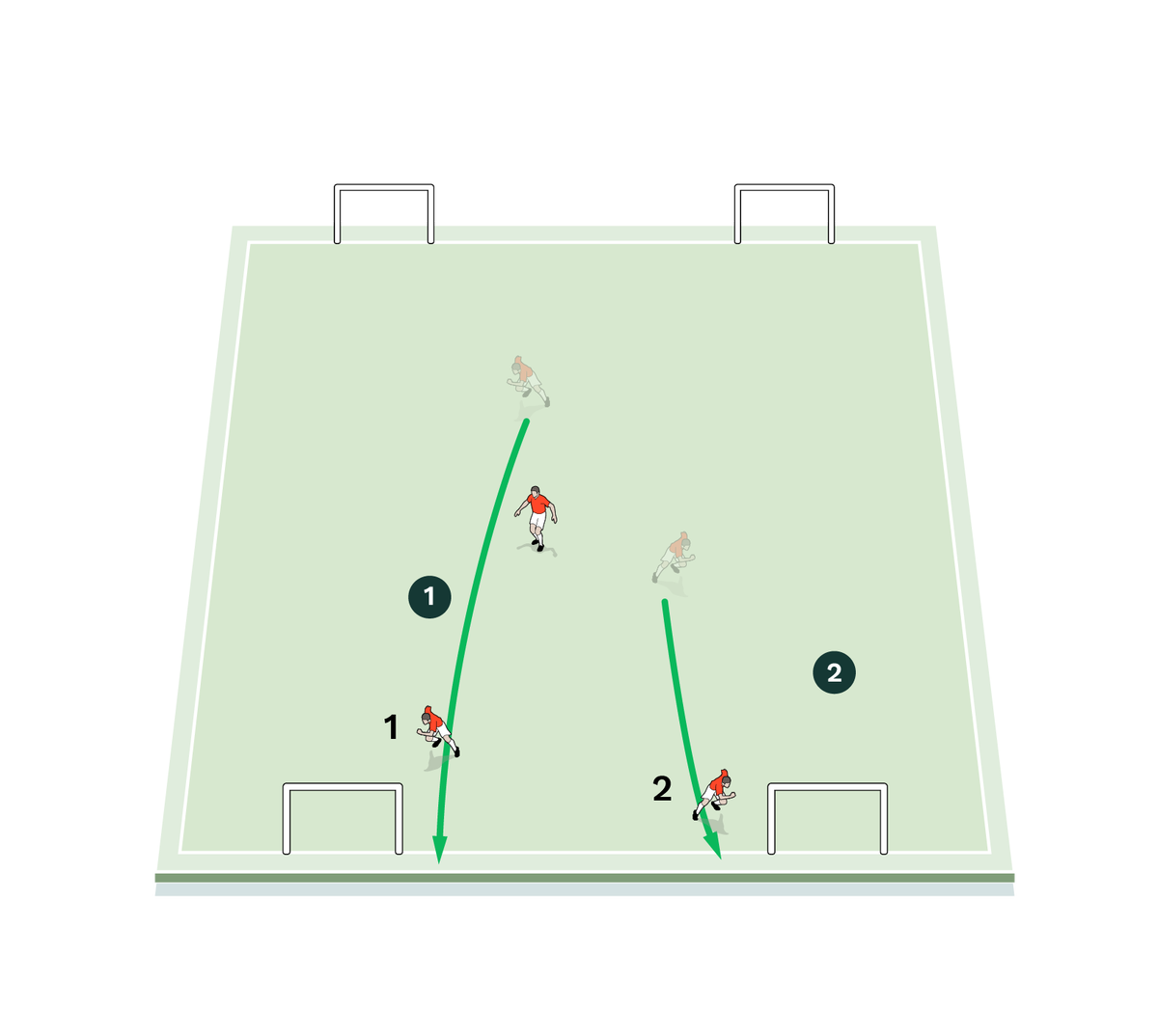
-
Player 1 and Player 2 sprint behind goal
-
Same pattern starts immediately from opposite side
We are looking to deal with the ball on the move at speed, and for the quality and accuracy of passing, receiving and link-up play (weight, underhit/overhit, inside/outside of foot, using both feet, using one or two touches). We want to look at the movement to support, seeking dynamic and sharp movements, and link-up play, with one touch if possible and two touches if needed.
We can progress this by having Player 2 make a diagonal support run to get the ball off the target player, and pass it into the mini goal [1c].
[1c]
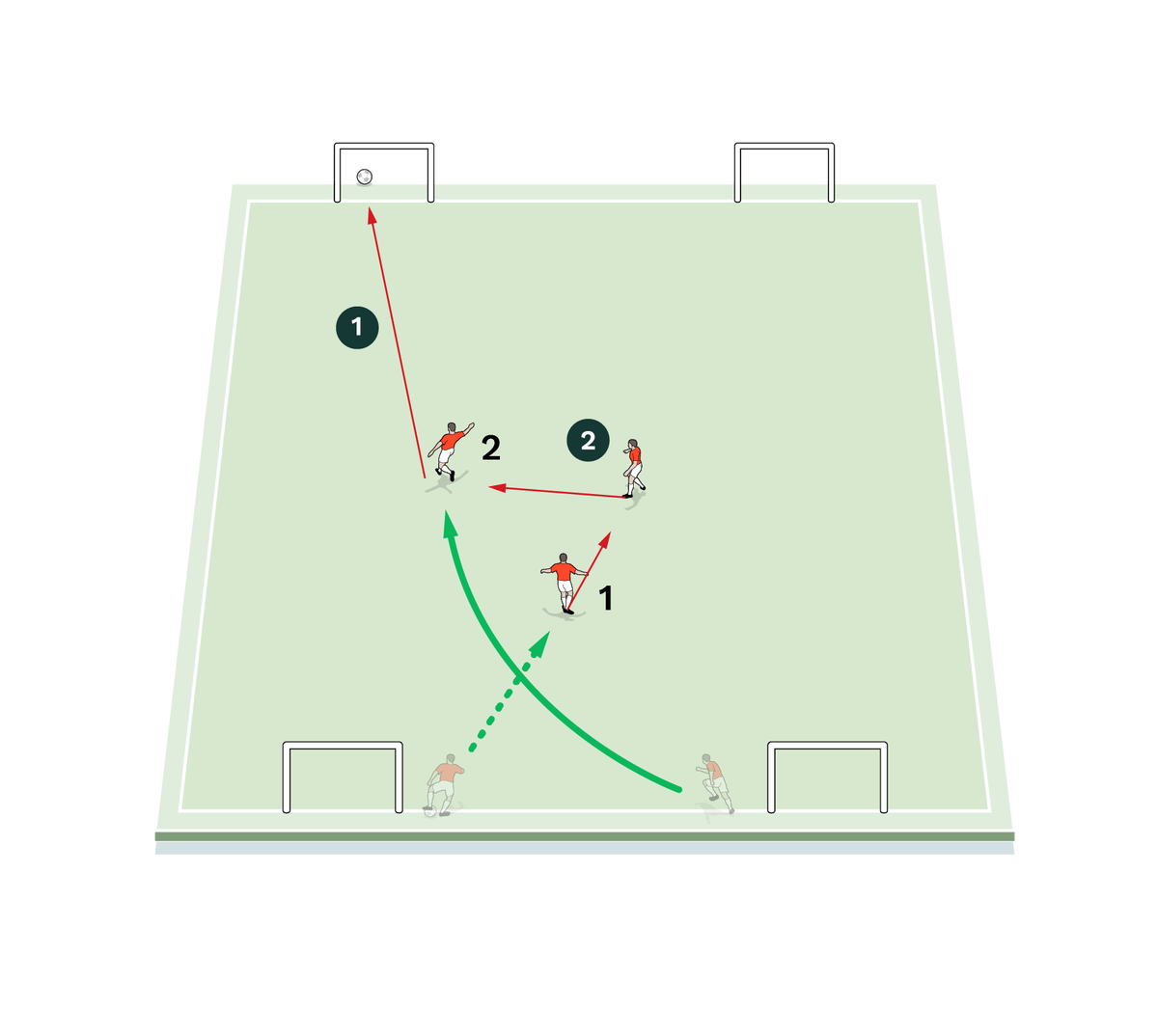
-
Progression – Player 2 makes diagonal support run to get ball off target player
-
Player 2 passes it into mini goal
We could also get Player 2 to make a diagonal support run to get the ball off the target player and pass it diagonally to Player 1 to hit the mini goal [1d]. We could introduce another target player to join the pattern.
[1d]

-
Progression – Player 2 makes diagonal support run to get ball off target player
-
Player 2 passes it diagonally to Player 1 to hit mini goal
CREATE AND SCORE
We work in an area roughly the size of two penalty boxes. The game starts with a 3v2 situation in favour of the blue team [2a].
[2a]
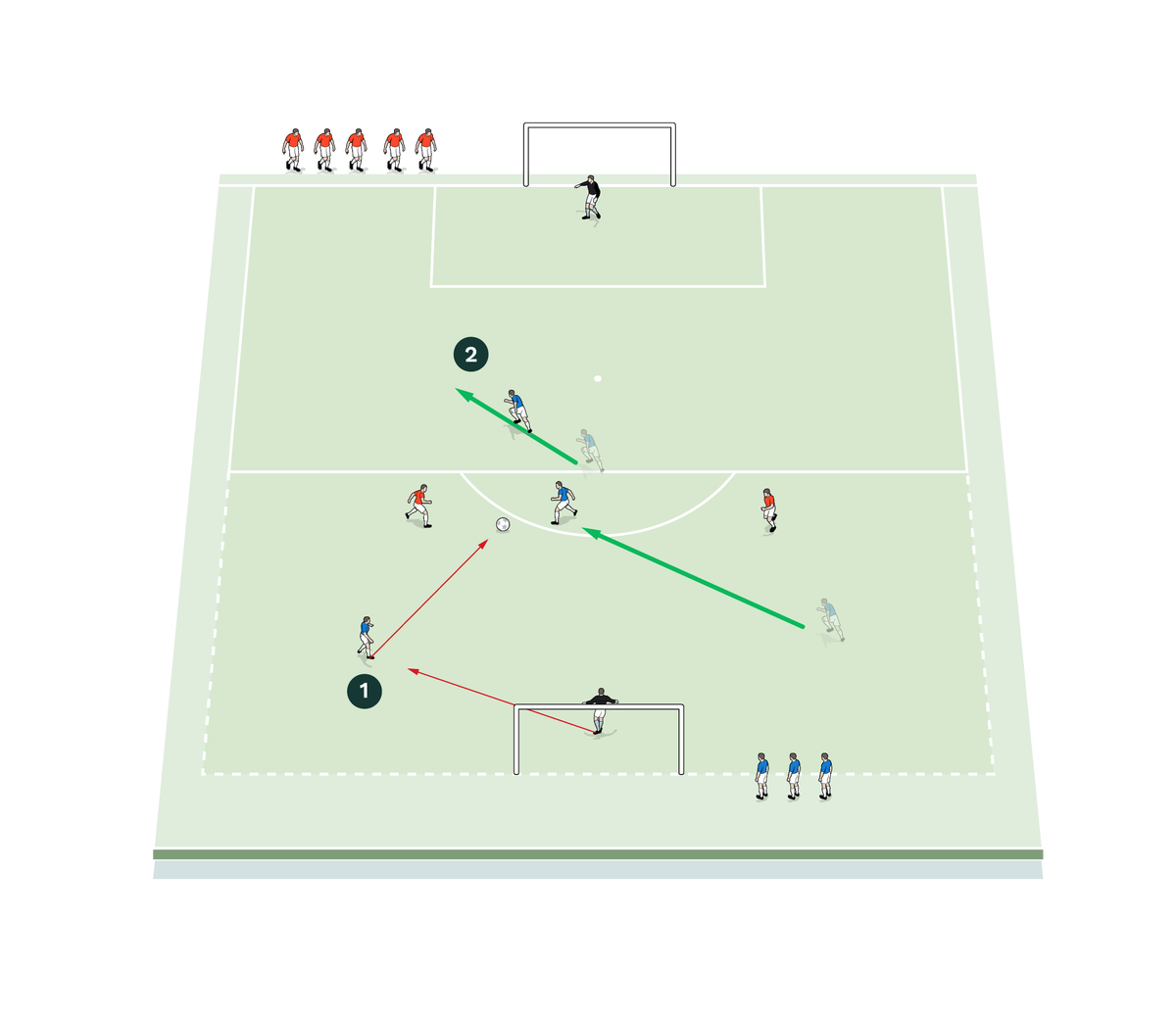
-
Game is 3v2 in favour of blue team
-
Blue team mount attack and seek to score
When a goal is scored or the ball is out of play, the red team immediately attacks in a 4v3 situation [2b]. After that, three new blue players start an attack against two reds. After ten minutes, the teams change roles.
Here we seek to combine, create and be clinical in front of the goal, to attack quickly and directly to exploit the opposition with and without the ball, to think, look, move and play forward, to deal with the ball at speed, looking at individual and combined finishing, and at risk-taking and decision-making of when to shoot and when to pass.
[2b]
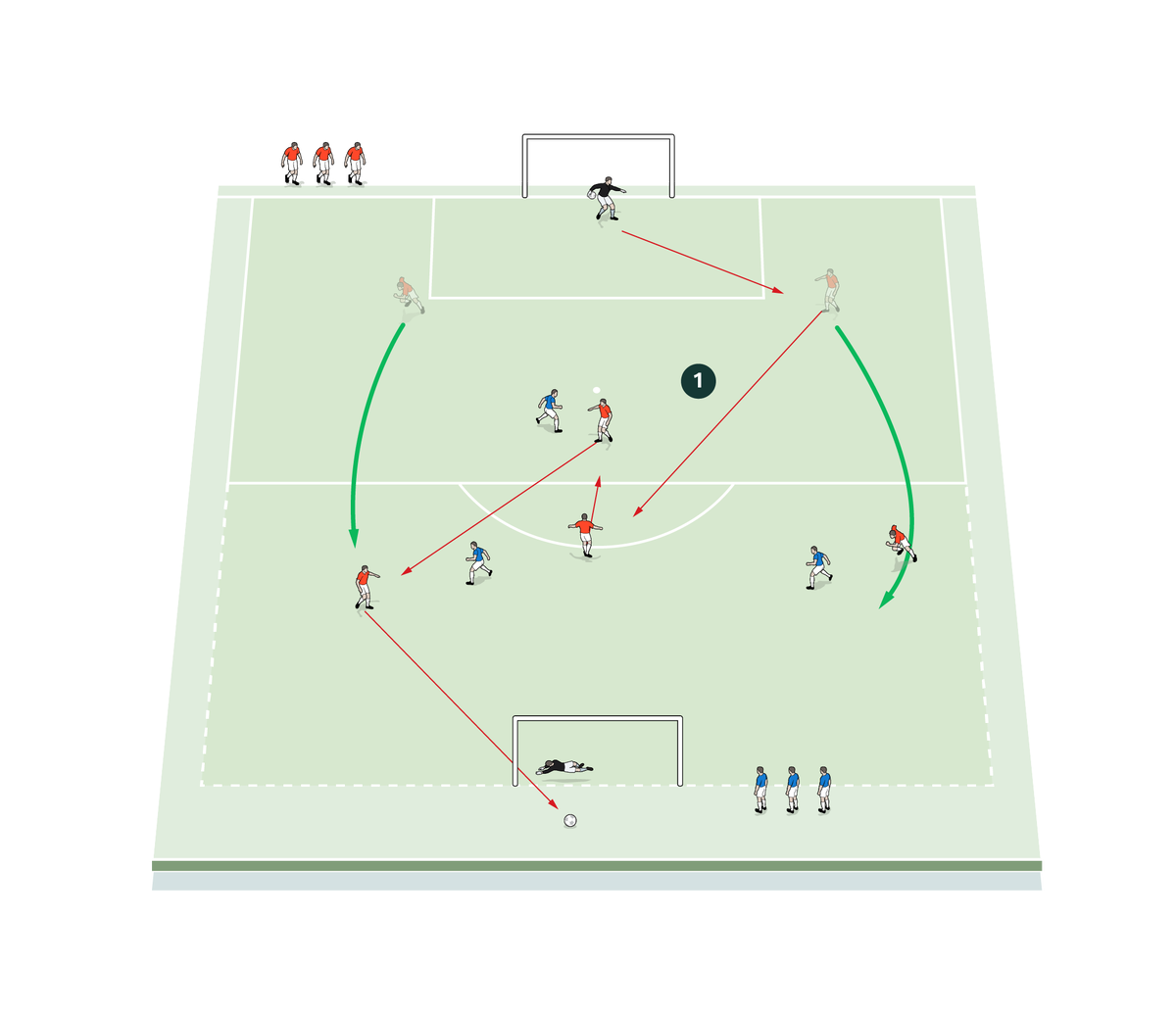
-
After goal is scored, red team attacks in 4v3 situation
ZONAL GAME
Three zones are created by using the width of the penalty area, 18yds in length. Each team has seven players: a goalkeeper, two defenders, three midfielders and one forward. The aim of this game is to practise creating overloads in the three zones to create and score. To start, the blue team goalkeeper plays out 3v1 with the two defenders. One of the defenders must bring the ball into the middle zone and create a 4v3 overload to play through [3]. The forward can drop to overload further to make a 5v3. Once into the end zone, you can create a 2v2 or 3v2 scenario to try and score. If the red team wins the ball, they also try to create overloads and score in the same way. When defending, all players are “locked in” to their zone (defenders must play only in their zones).
We build on our previous two activities, and also look to create space and overloads while playing through zones, to move the ball with quality and precision, to recognise the available space to attack with or without the ball, rotation and combination play, and finishing.
[3]
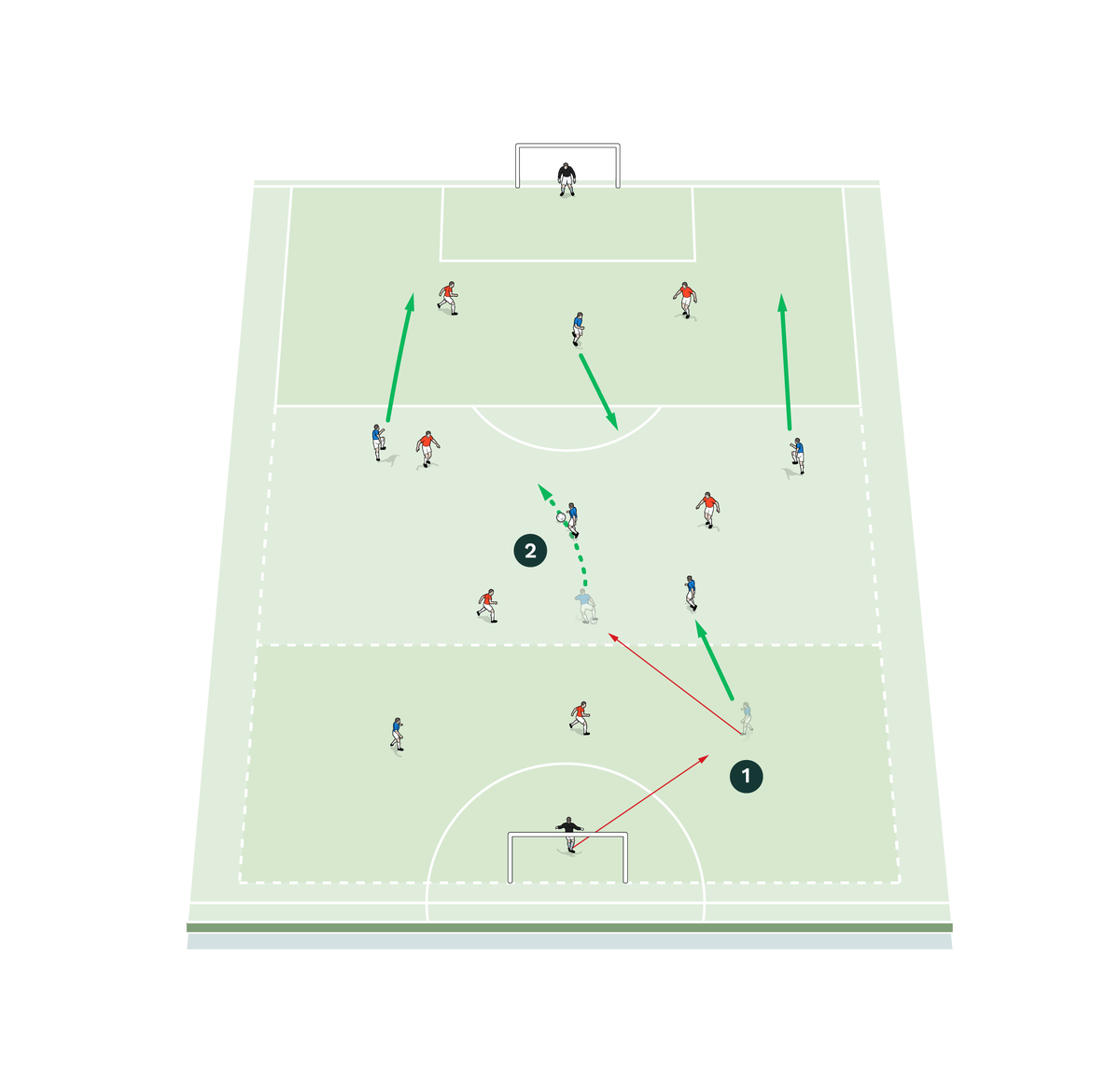
-
Blue team goalkeeper plays out 3v1 with two defenders
-
One of the defenders brings ball into middle zone and creates 4v3 overload to play through
COACHING POINTS
What are the key things to look out for technically and tactically?
Players have lots of challenges to deal with.
Technically: dealing with the ball on the move at speed; using limited numbers of touches; quality and accuracy of passing and receiving (using different surfaces of the foot and use of both feet); finishing skills and a variety of shooting techniques.
Tactically: movement to support, and timing and direction of movements and forward runs; decision-making of when to pass, dribble or shoot; creativity, improvisation and combination play; awareness of available space, danger and support would help with the development of better decision-making in possession.
What are the typical mistakes that players might make, and how do you avoid them?
It is important that the coach sets a high tempo from the very beginning and controls it throughout the session. Players must learn how to excel technically and tactically while playing at speed. When the session progresses, players could make safer choices on the ball, or be less creative with their movement after a couple of mistakes. It’s vital the coach encourages players to continue being creative and learn how to deal with mistakes. For that reason, I’d coach in blocks, allowing players time to experiment and then give them feedback – and ask for theirs.
Related Files
Editor's Picks
Deep runs in the final third
Using the goalkeeper in build-up play
Pressing principles
Intensive boxes drill with goals
Penetrating the final third
Creating and finishing
My philosophy
Pressing initiation
Compact team movement
Coaches' Testimonials

Alan Pardew

Arsène Wenger

Brendan Rodgers

Carlos Carvalhal

José Mourinho

Jürgen Klopp

Pep Guardiola

Roy Hodgson

Sir Alex Ferguson

Steven Gerrard
Coaches' Testimonials

Gerald Kearney, Downtown Las Vegas Soccer Club

Paul Butler, Florida, USA

Rick Shields, Springboro, USA

Tony Green, Pierrefonds Titans, Quebec, Canada
Join the world's leading coaches and managers and discover for yourself one of the best kept secrets in coaching. No other training tool on the planet is written or read by the calibre of names you’ll find in Elite Soccer.
In a recent survey 92% of subscribers said Elite Soccer makes them more confident, 89% said it makes them a more effective coach and 91% said it makes them more inspired.
Get Monthly Inspiration
All the latest techniques and approaches
Since 2010 Elite Soccer has given subscribers exclusive insight into the training ground practices of the world’s best coaches. Published in partnership with the League Managers Association we have unparalleled access to the leading lights in the English leagues, as well as a host of international managers.
Elite Soccer exclusively features sessions written by the coaches themselves. There are no observed sessions and no sessions “in the style of”, just first-hand advice delivered direct to you from the coach.
